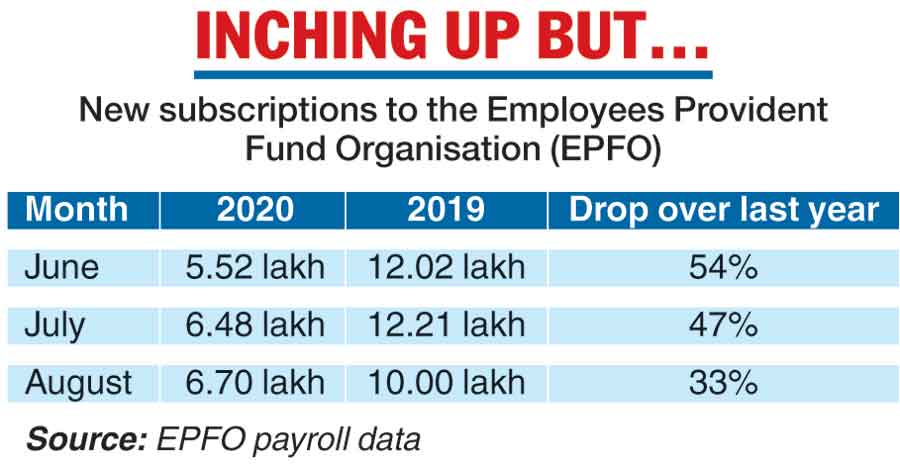Formal employment generation has started picking up in the past few months but the deficit compared to last year continues to be wide, the latest payroll data of the Employees Provident Fund Organisation (EPFO) suggests.
The data, released by the EPFO last week, showed that the number of new subscribers, which mostly indicates new job holders, increased from 5.52 lakh in June to 6.48 lakh in July and 6.7 lakh in August.
Despite the increase, the number remained far lower than that in the corresponding months of last year.
The drop in new subscribers was 33 per cent in August 2020 over the corresponding month of last year. The fall was steeper in June and July 2020 over the corresponding months of 2019.
After the Covid outbreak, the Centre had imposed a nationwide lockdown which continued till May-end. It was gradually lifted from June 1.
The payroll data showed that the participation of women is less than 20 per cent in new subscriptions in August this year, down from 23 per cent in the same month last year.

Mahesh Vyas, managing director of Centre for Monitoring Indian Economy (CMIE), said the enrolment data of the EPFO offered a good sign about gradual recovery in formal employment in the recent months but there is still a big deficit in employment creation compared to last year.
“The year-on-year comparison of enrolment data suggests the decline in generation of new jobs is gradually reducing. The data of every month shows the job creation is gradually increasing. The CMIE’s data also suggests a similar trend. The job loss was enormous in April but job generation picked up gradually in the subsequent months although the deficit remains, compared to last year,” Vyas said.
“There is still a long way to go to get back to the employment situation of the pre-Covid period. It will depend on how fast economic activities are restored. In the festive season, there are always increased activities. It will be interesting to see if these activities are sustained in the lean period of January and February too. Also, much would depend on how fast the corona fear is going away,” Vyas said.
He said women’s participation in labour gets affected during difficult times. Women are the first to leave the workforce and they suffer more than men.
Companies are hesitant to hire women workers during difficult periods, a labour economist said.
“There are social factors like more work at home that is mainly done by women. So they are likely to be more occupied at home. Second, some employers do not hire women so that they can avoid expenses on special safety, transport and possibly maternity leave,” he added.













